The Rio Purus is one of the major tributaries of the Amazon. Its length is over 3,200 km. The source and upper reaches of the Rio Purus are in Peru, the middle and lower reaches are in Brazil. The Rio Purus is home to numerous ornamental fish, including various armored catfish. A species flock of armored catfish from the Rio Purus always causes great confusion when it comes to identification. Of the six species in the species flock, only two have been scientifically described to date (Brochis pulcher and Hoplisoma schwartzi), the rest have only auxiliary names. These armored catfish are often sent mixed, which increases the confusion even more, which is why we want to try to establish a uniform naming system here, at least for our fish.
These are the species:
Hoplisoma schwartzi https://www.aquariumglaser.de/fischarchiv/corydoras-schwartzi/
Hoplisoma sp. „Super Schwartzi Hifin CW28“ (https://www.aquariumglaser.de/en/fisharchive/hoplisoma-sp-super-schwartzi-hifin-cw28-2/)
Hoplisoma sp. „CW28“ ( = cf. pulcher) (https://www.aquariumglaser.de/en/fisharchive/hoplisoma-sp-cw28-cf-pulcher-2/)
Brochis pulcher, this post
Brochis sp. „CW28 Longnose“ ( = pulcher Variante) (https://www.aquariumglaser.de/en/fisharchive/brochis-sp-cw28-longnose-pulcher-variant/)
Brochis sp. „Super Schwartzi Hifin Longnose“ (https://www.aquariumglaser.de/en/fisharchive/brochis-sp-super-schwartzi-hifin-longnose-corydoras-sp-labrina-or-labrea/)
Common to all six species is a black longitudinal stripe pattern on a light background, an eye band is present, the caudal fin is banded. The dorsal fin spine is strikingly cream-colored (only in H. schwartzi are there also specimens with gray or blackish dorsal fin spines), the rest of the dorsal fin without a distinct pattern.
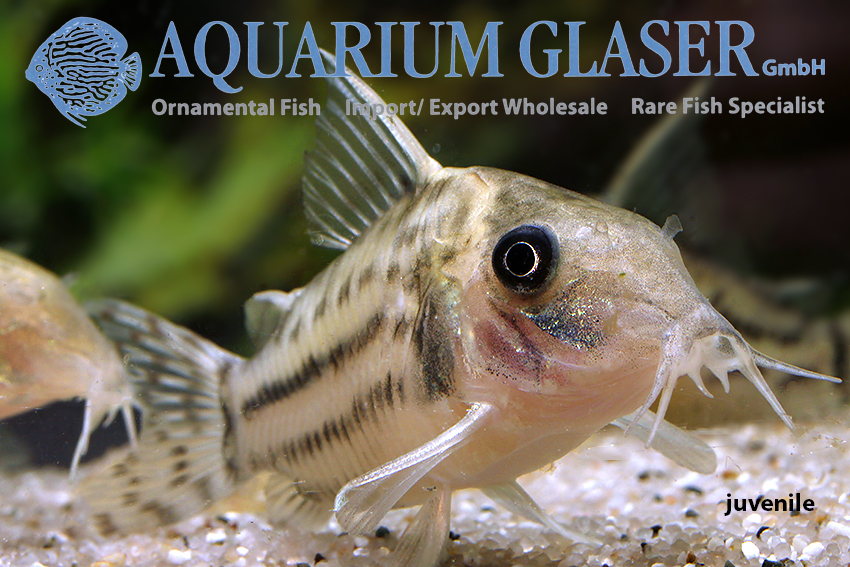


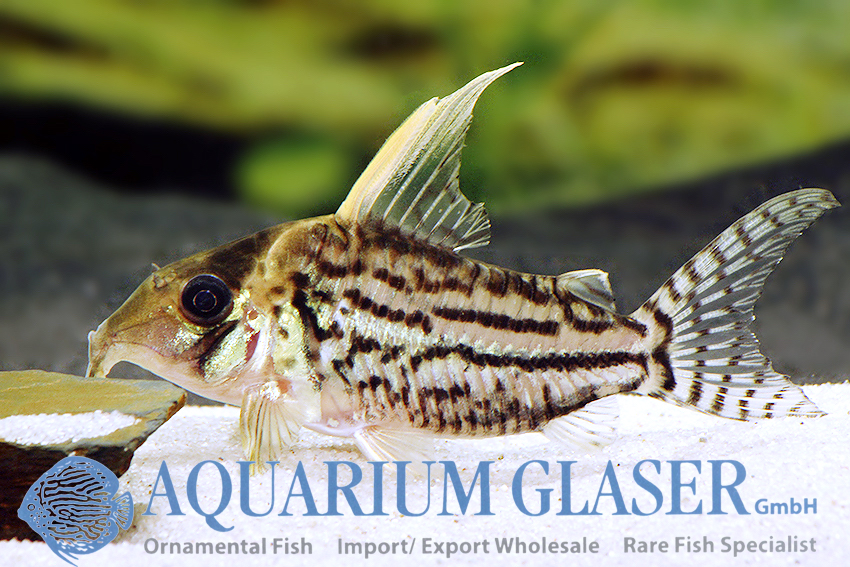
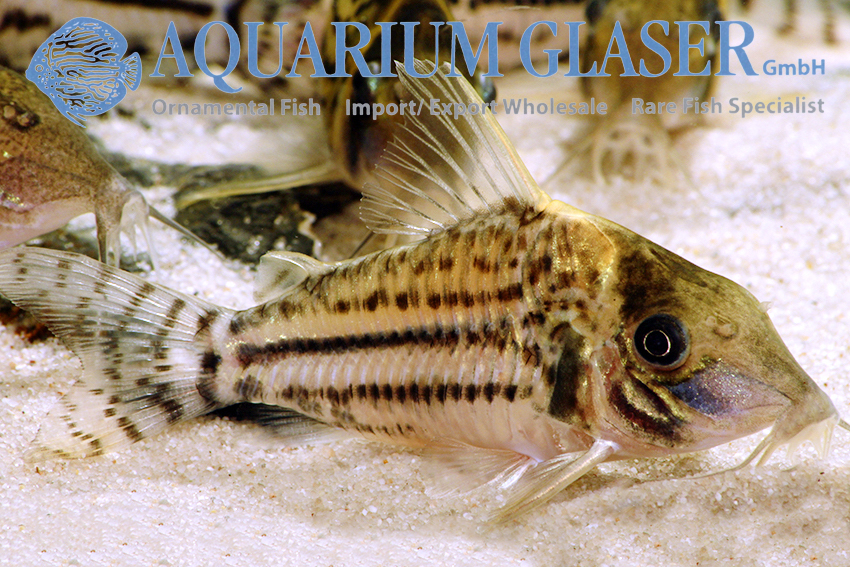
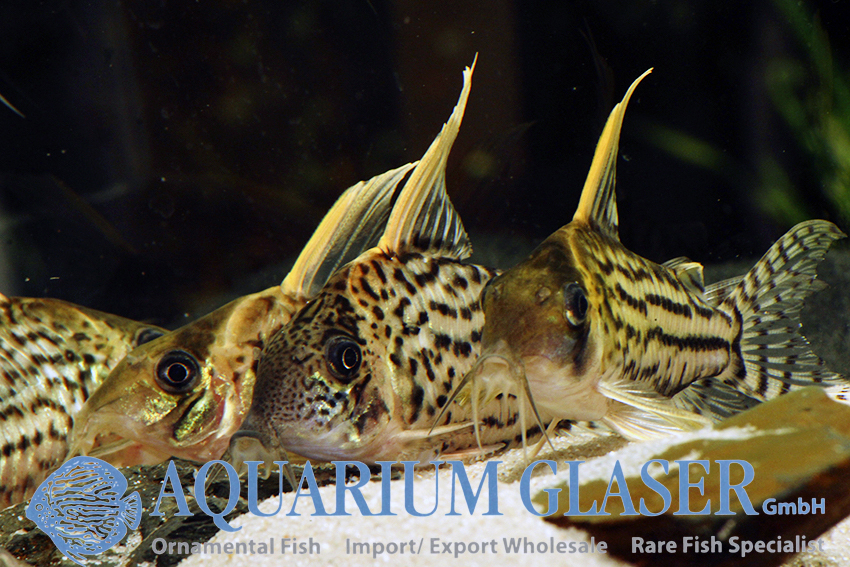
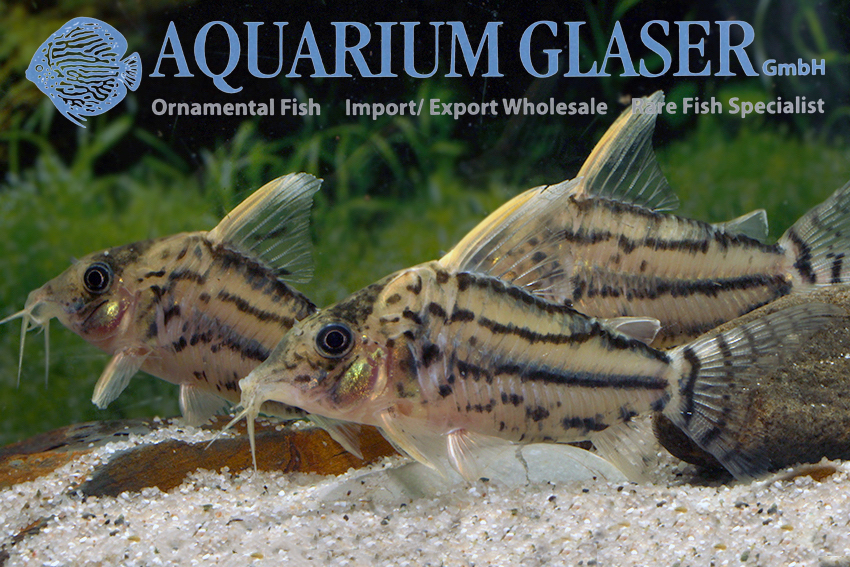
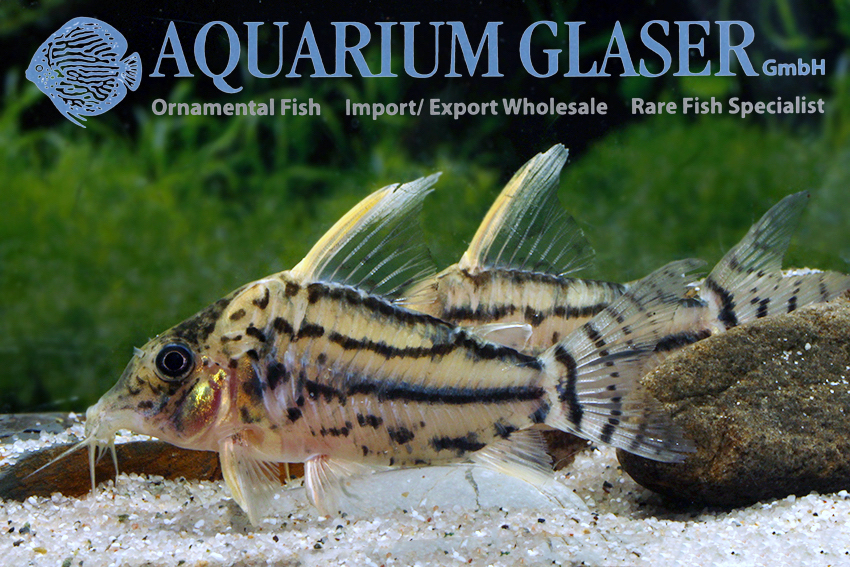
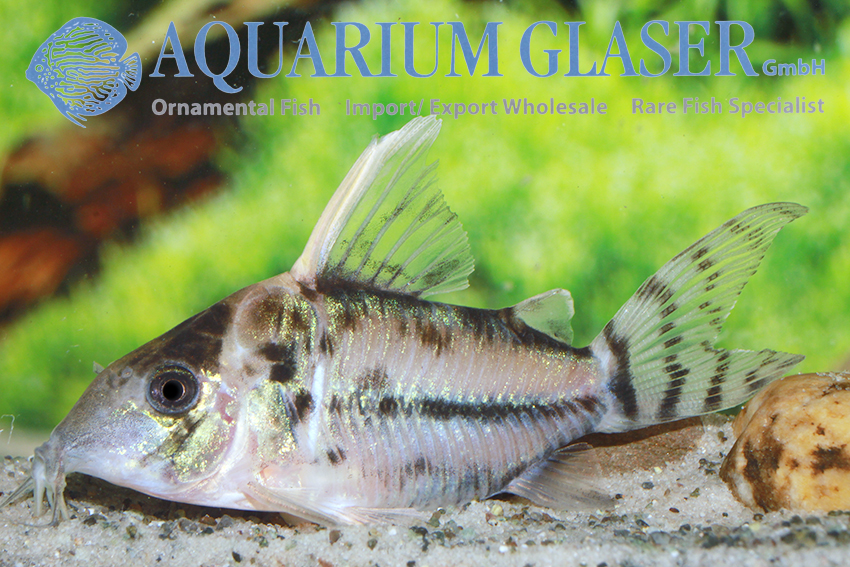
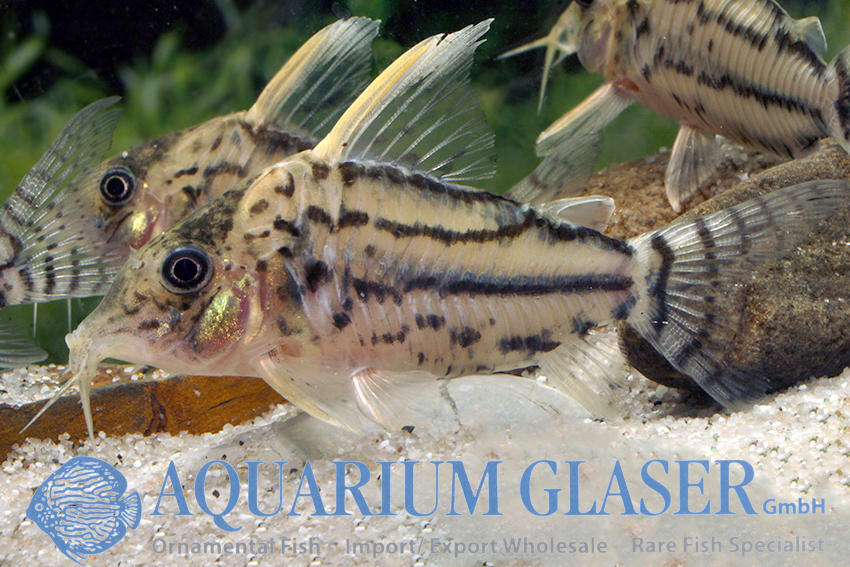
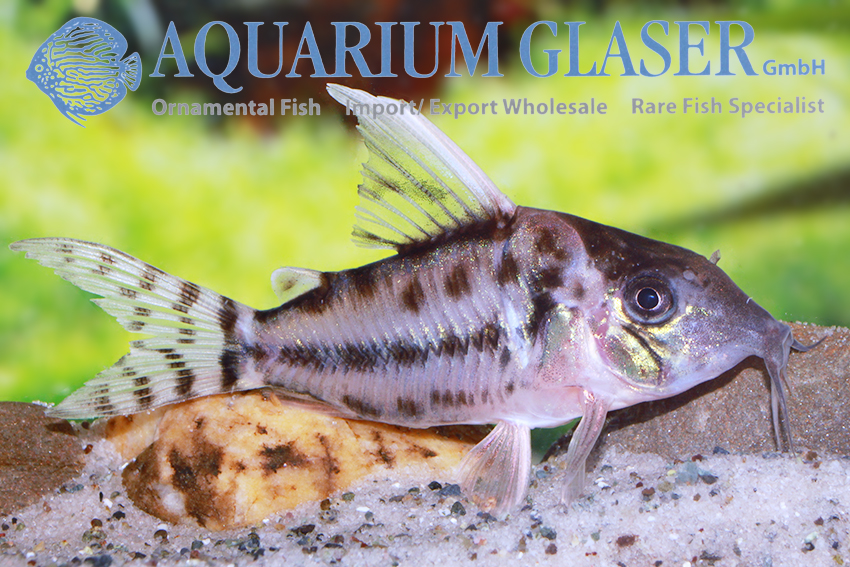
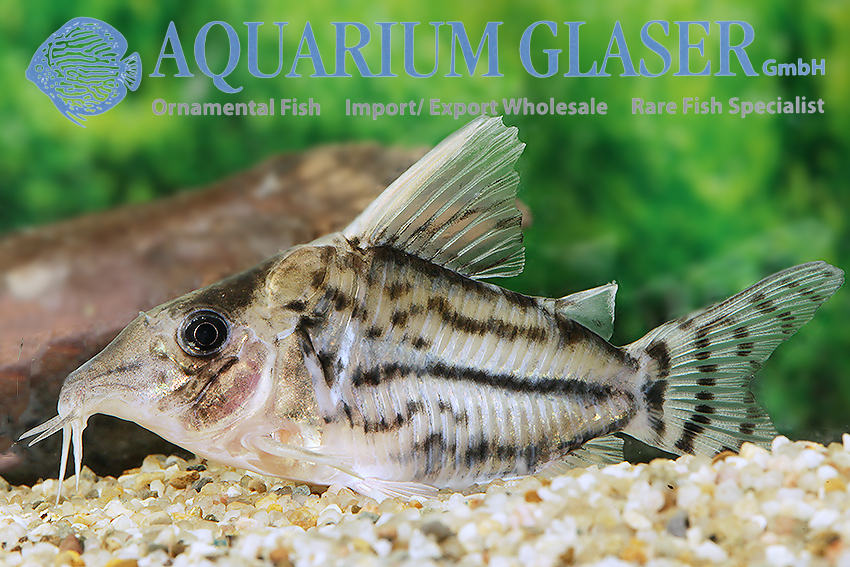
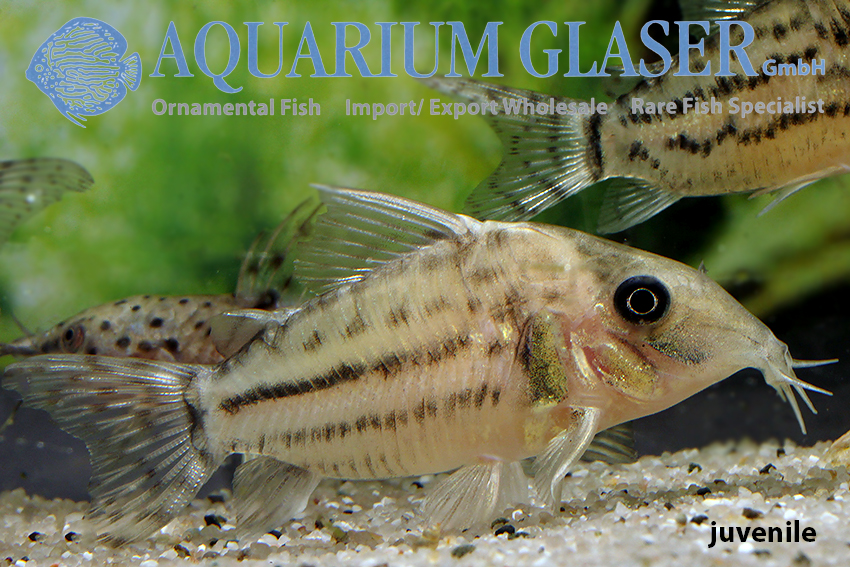
The characteristics of Brochis pulcher are: Long-snouted; three broad, parallel longitudinal bands, which can sometimes be broken up into dots, one above, one on and one below the midline; the dorsal fin spine is conspicuously cream-colored; the dorsal fin is conspicuously high in males in breeding condition. The maximum length is 6-6.5 cm (standard length without caudal fin).
This armoured catfish is well characterized by its three longitudinal bands. Similar are C141 (origin unknown, https://www.aquariumglaser.de/en/10-catfishes/corydoras_sp_c141_en/) with significantly narrower bands and Brochis ornatus from the Rio Tapajos, which also has three significantly narrower longitudinal bands. B. ornatus also does not have the striking cream-colored dorsal fin spine (C141 does).
For our customers: Brochis pulcher has code 241704 on our stocklist. Please note that we only supply the wholesale trade.
Text & photos: Frank Schäfer




